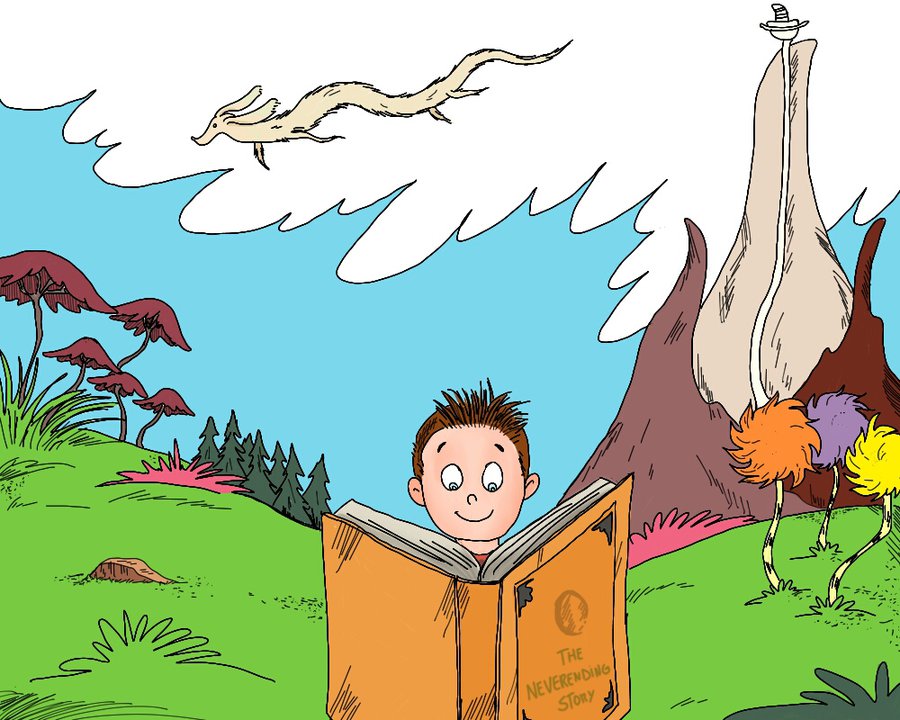The NeverEnding Story was one of my childhood favourites. If you don’t remember the story, it involves a terrible threat to the fantasy land of Fantasia (yes, that is the name) and a quest to save this land. At the same time, this is no ordinary quest. The whole thing is a story in a book read by our protagonist, Bastian.
It is a very “meta” story that, as I realised when I watched it with my children tonight, is the literary equivalent of “turtles all the way down”. I think I superficially understood the notion of a boy’s imagination creating whole worlds (that, in turn, were filled with beings whose imaginations created more worlds) when I first watched the movie.
That notion only really made sense to me this evening, partly with Neil Gaiman’s help. I’m currently reading his new book, “The View from the Cheap Seats”. I read something he said about the role of fiction authors and how they tell stories, on the train this afternoon. This part caught my attention, mostly because of his source code analogy:
We don’t give them the people or the places or the emotions. What we give the reader is a raw code, a rough pattern, loose architectural plans that they use to build the book themselves.
The combination of Gaiman’s quote and watching The NeverEnding Story from an adult’s perspective brought it all together for me. It only took me about 30 years to catch on.
At the risk of stating the obvious (bear with me, I seem to be a bit slow with this one):
- The story Bastian reads, also called The NeverEnding Story, is, essentially, the same story we watch play out in the movie.
- The story itself is just an arrangement of words and it requires the reader’s imagination to breathe life into this “raw code” and create the mystical world of Fantasia (or the not-so-mystical world of early 1980s America).
- When we stop using our imaginations and reading fiction, the story’s Nothing starts erasing our fantasy constructs.
- To rebuild these fantasy worlds, all you need is your imagination, plugged into a story of some kind.
This whole thing was a little too Inception for our son. At the same time, both kids finished off the movie on a real buzz. Our son grabbed a book on his way to bed and I found him reading it when I finally put him to sleep.
The movie is more than a little dated, for sure. But the story left our kids excited about books and stories, just as it left me excited about my next book when I watched it about 30 years ago. That is a win to me.
Image credit: The NeverEnding Story by ThiagoFragosso, licensed CC BY-ND 3.0

 RSS – Posts
RSS – Posts
What do you think?